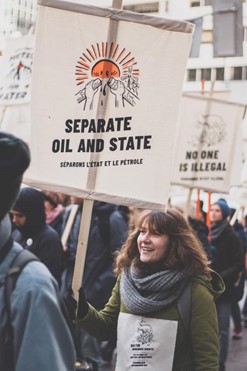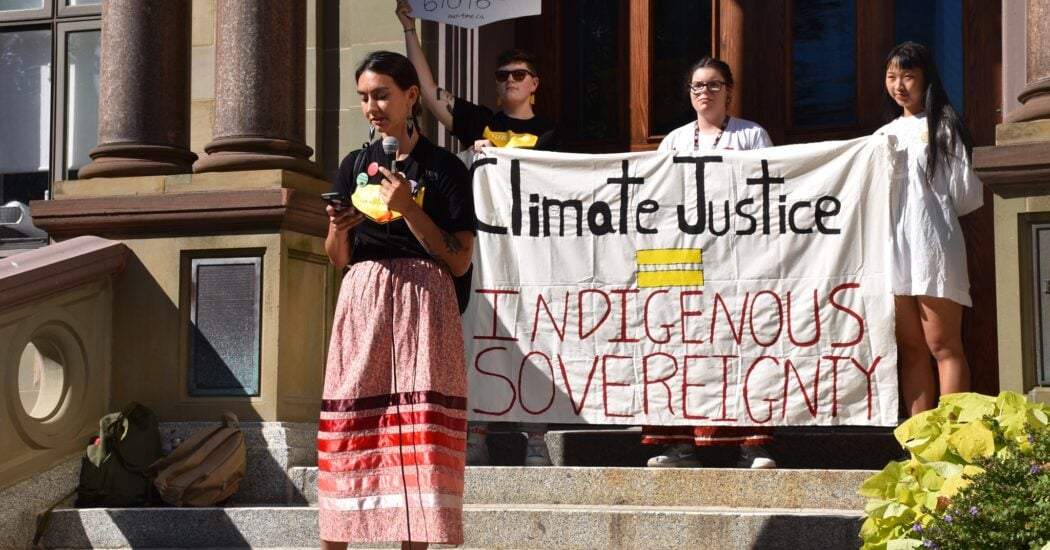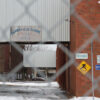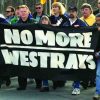KJIPUKTUK (Halifax) – In part one of this story I introduced two queer activists in the climate movement here in Nova Scotia. In this part 2 I want you to meet two more. The stories of these powerful and unique individuals fighting for the future of humanity and the planet are worth telling. This two-part series serves only as an initial exploration.
As I wrote in Part 1, the movement is a wave made up of symbiotic actions and stories, and we are all interdependent. May the compassion to understand our connections arise from hearing these stories.
Sabrina Guzman Skotnitsky and the student queer and climate movements

Sabrina is a graduate of Dalhousie University who grew up in British Columbia and has been engaged in student movements, climate movements, and queer rights organizing.
Growing up in BC, Sabrina felt connected to nature and the environment from a young age. She became involved in environmental work through a volunteer role in which she helped to remove invasive species from a local park. That prompted her to get involved in larger actions. She got involved with Kids for Climate Action, going to rallies and fighting coal plants and pipelines. These experiences taught her a lot more about climate justice and intersecting systems of oppression.
I asked her how her queer identity impacts her work.
“I figured out I was queer around the same time I started getting involved in the climate movement and it was one of those moments where you have more growth around your personal understanding of yourself and the world, I was around 14,” she says. “Learning about LGBTQ+ issues and climate issues at the same got me interested in the intersection of issues and systems of oppression.”
Sabrina was involved in both climate and queer organizing throughout high school, through Kids for Climate Action and volunteering with QMUNITY, a long-standing community organization in BC serving the 2SLGTBQ+ community. She led workshops called Pride Speaks with students in schools on gender and sexuality and learned a lot during that time.
“When I started university I found that queer femmes were at the forefront of everything around justice and around the environment,” she says. “I felt really good about that, because it felt like these were my people. I don’t know why that is, but it seems like a trend.”
Sabrina has found that while many and maybe even most of the people in the climate movement identify as members of the queer community, that it isn’t a lens that is often discussed. Meanwhile, queer folks, especially youth, often experience heavy impacts as a result of the climate crisis.
Although Sabrina does a lot of work to remain motivated and not despair when it comes to the climate crisis, she sometimes feels anger and resentment.
The Birthmark campaign with Divest Dal, which tattooed the concentration in parts per million of carbon dioxide in the atmosphere in the year of someone’s birth, made her realize how all of us were born into this and how we had no choice in the matter. “It made me really angry,” she says.
“I feel guilt, rather than anxiety, because I am aware of all the privileges I have both in the climate movement and in the queer movement. I also feel guilty being born in Canada and knowing that my lifestyle contributes to climate change and then when you build in colonialism, racism, white supremacy, I feel obligated to do something and I can’t stop from doing something, says Sabrina.
“I’m very much a community person and I care a lot about the collective. If I can’t find motivation in myself, I can always find it from others,” she says.
When asked for any last thoughts, Sabrina shared the following:
“It is interesting when I think about how queer femmes are at the forefront of these movements, a lot of those are Indigenous queer femmes, people of colour, two-spirit, non-binary. For some people it is not an option to be doing this work but it is for their survival and the survival of the community. When you’ve experienced one form of oppression it makes you compassionate towards folks who experience other forms of oppression. I know too much to stay quiet,” Sabrina explains.
Naomi Bird and the Dalhousie Student Union Sustainability Office

Naomi is the director of the Dalhousie Student Union Sustainability Office but they have been an ‘environmentalist’ since elementary school.
They bring organizing into everything that they do and consistently advocate for Indigenous and other rights through social media and providing their time and resources to support Elders. They also share their knowledge and resources through offering anti-oppression workshops, budgets for reparations, calling-in their relations, and advocating for inclusion and diversity at community spaces that they frequent.
“I distinctly remember wanting to grow up to become an ‘activist’ when I was in grade eight, I think after hearing about logging protests in British Columbia,” they say. “My nokum (grandmother) was fundamental in northing my connection to the land; in my mind, being able to read the landscape and caring for non-human kin is essential for environmentalism.”
Such an intimate connection to place and the land is crucial for understanding the real and prevalent changes in the climate, they say.
Naomi is a Two-Spirited person and explains that their ‘queer’ identity, their Indigeneity, and all the other roles in their communities and life are inseparable in their experience and their organizing.
“Caring for kin and the land is a responsibility I hold as a Nehithaw (Cree) person, but in speaking with other Two-Spirited folks, it seems we have often been advocates, activists, and community leaders from a young age,” they say.
“Even though some Two-Spirited teachings are lost, sleeping or otherwise hard to access- I do believe we inherently know what to do, and by being in ceremony and listening to our ancestors, Elders, bodies, and dreams- that we can (re)learn our roles,” Naomi says.
Naomi believes that the climate movement can be intersectional and accepting of queerness, Indigeneity, and other identities. But that’s not always the case.
Organizers often neglect to include Indigenous sovereignty and protocol(s) and demonize Indigenous practices, especially in regards to veganism, without understanding or acknowledging the sustainable practices of Indigenous Nations.
They often find that when people focus on singular issue organizing, like environmentalism, that it does not address the systemic roots of the climate crisis, which are interwoven with capitalism, white-supremacy, and [settler]- colonialism.
While the climate movement and organizing spaces don’t tend to exude blatant homo/transphobia they also don’t always provide the space and time to focus on queer needs, vulnerabilities, or concerns in regard to the climate crisis.
Like so many of us, Naomi finds it difficult to dream and consider their future with the climate crisis looking over us. They find that being involved in supporting Indigenous birth(s) is soothing because Indigenous births are an act of resistance, “not only in terms of replicating Indigenous Nationhood- but in the insistence that we will continue to care for the land and that she/they will care for us. We refuse dystopian futures, just as we refuse settler-colonialism; both are terrifying and unlivable.”
Their queerness impacts their ability to replicate Indigeneity in this scary and unknown future because the Indian Act dictates that they cannot pass on their Indian Status unless they choose a partner based on their status, and that their children can only receive status if it were through a heterosexual parenthood union.
As Desmond Tutu said: “If you are neutral in situations of injustice, you have chosen the side of the oppressor.”
This wise sentiment has rung true in my discussions with all four of the featured queer environmentalists. All of them, as queer folks with innate connections to nature, have found solace in the movement and compassion for others experiencing oppression and marginalization.
All mentioned that they can’t not do something, they feel a responsibility and a need to openly oppose the status quo. Queer folks are used to being different, to having to defend their identity and existence, and that extends to defending others, the planet, animals, and future generations.
These are but a few of the empowering stories of queer environmentalists in Nova Scotia. Many more remain untold. Perhaps these stories have helped in allowing the sun’s rays to begin to reach into the depth of this wave.
With a special thanks to our generous donors who make publication of the Nova Scotia Advocate possible.
Subscribe to the Nova Scotia Advocate weekly digest and never miss an article again. It’s free!



